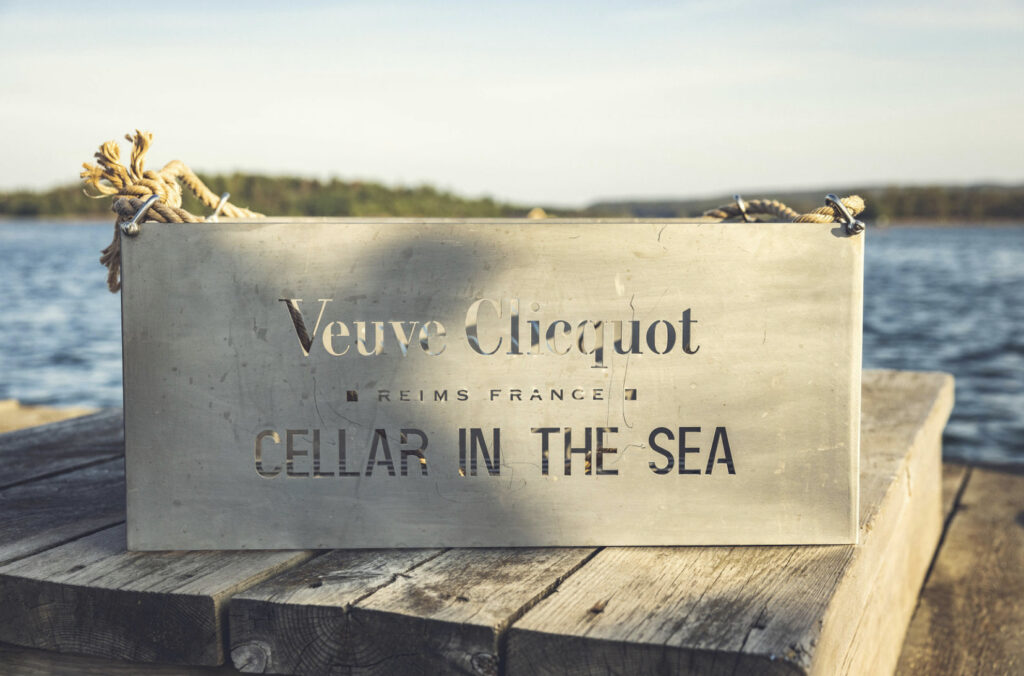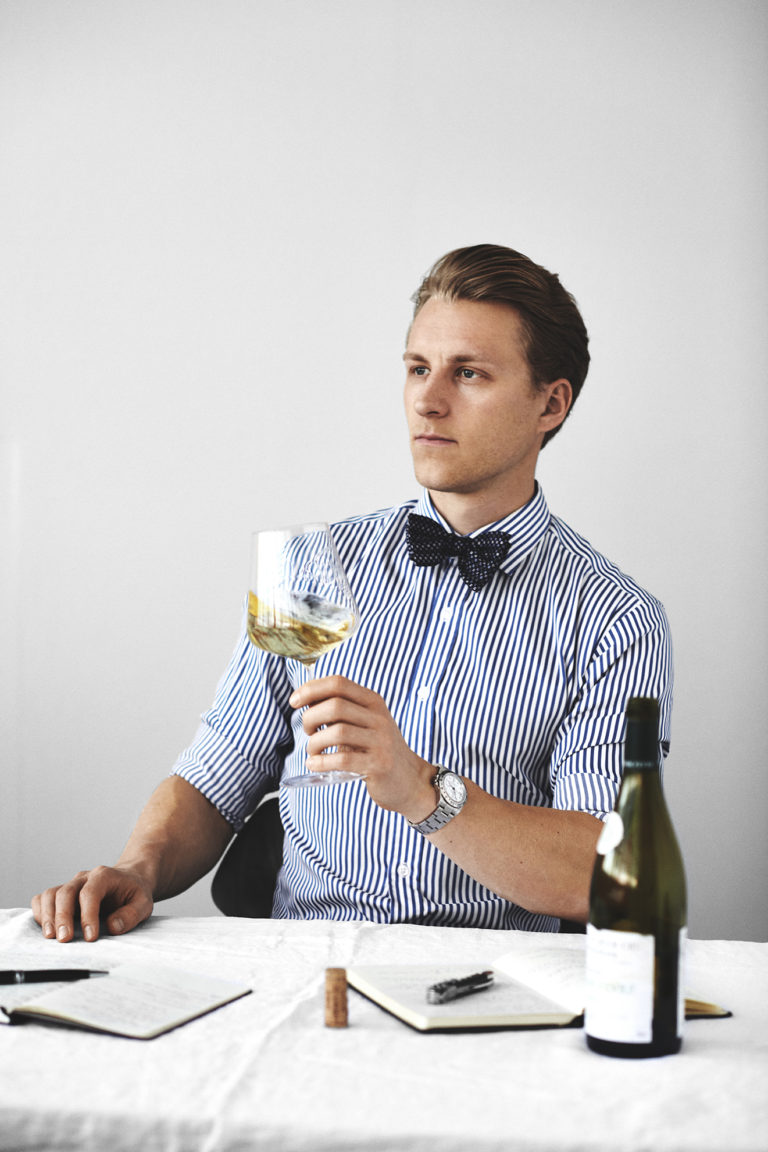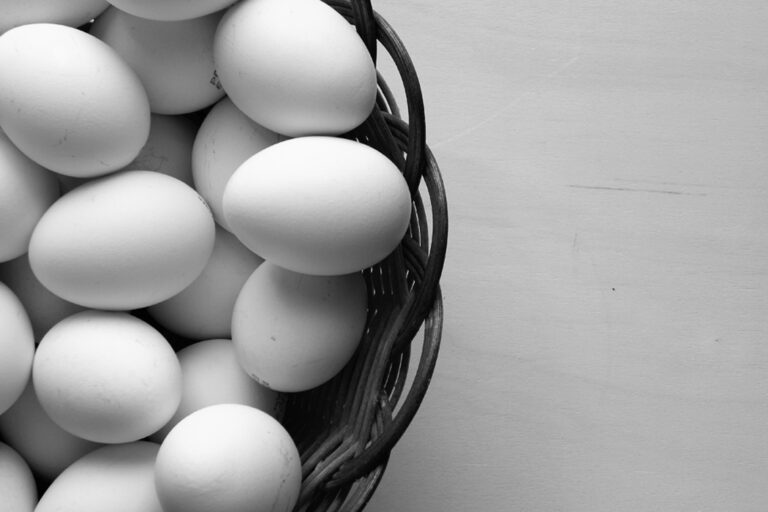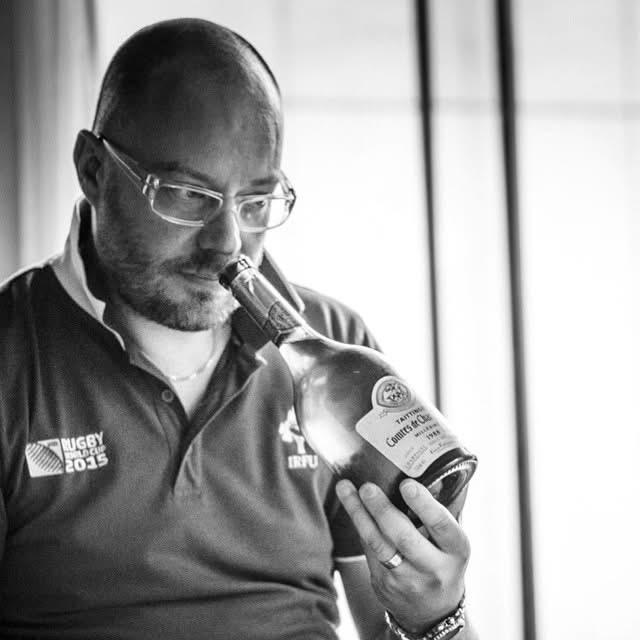Richard Juhlin was invited again to Silverskär in the archipelago of Åland to taste Veuve Clicquot – Cellared in the Sea. [read the full champagne story]
Estimated reading time: 14 minutes

Since the magnificent champagne find was made on the wreck outside Åland’s Silverskär, there has been a beautiful connection between Champagne and the Åland population. It’s been more than a decade since the first bottles of Juglar and Veuve Clicquot from 1840 were salvaged and auctioned off at record prices before the world’s fascinated eyes. Already when I had my first meeting on Åland as an exclusive consultant for the Åland Landscape Government, it was clear that the most important thing for the Åland people was to put Åland on the map, and they have certainly done that. Unfortunately, it went exactly as I predicted in my “Juhlin report”.

‘After all, I wanted the bottles to remain under water in a pristine environment for as long as possible to still be vital and enjoyable.’
RICHARD JUHLIN
When it didn’t work for practical reasons, it took less than a year before the bottles were lifeless and completely uninteresting from a wine connoisseur’s perspective. The original plan to create a new cuvée of young wines with a splash of 1840 Silverskär was shelved by Dominique Demarville to the great disappointment of the Åland people.
Fortunately, however, Veuve Clicquot continued its involvement in the project and found an important lifeline in that immediately after the auction they began a very interesting project called Cellar in the Sea. In short, it’s about seeing how sparkling wine develops when stored with the same pressure on the outside as on the inside in seawater at a significantly lower temperature than the one you have in champagne cellars.

It was decided to sink a few hundred bottles of 2004 Veuve Clicquot Rosé, Veuve Clicquot Demi-Sec (2010-base), Yellow Label (2010-base) and Veuve Clicquot Brut (2008-base) in magnums in metal cages to 50 meters deep in a temperature of 4.5 degrees and put away exactly the same amount of these wines in the cellars of Reims. The first time they picked up and unloaded the cages and did a comparative test was in 2017 and now in 2023 it was time again for the same exercise in midsummer at the scenic Klobben a stone’s throw from the cages.

‘I am one of the lucky three who was there both times and also the only one who has been there since the bottles were found.’
RICHARD JUHLIN
Over the years, they have had a new government on Åland, a new marketing department, a new CEO and a new winemaker at Veuve Clicquot. The intention is now that we will be the same journalist team together with Clicquot that follows the development and tastes the bottles from both cellars in the sea and on land every four years precisely in the unique Nordic midsummer light. You can find the individual tasting notes in the Tasting Library at the Champagne Club site. [read tasting notes here]
In summary, it’s pretty clear to me how they differ from each other. How much the pressure contributes is debatable, but for me the biggest difference is simply that the lower temperature of 4.5 degrees compared to 10 degrees in Reims slows down the development. I have personally had the opportunity to taste champagnes continuously from cellars at 10 degrees against those of friends where the temperature is rather 12 degrees, but above all I have tested several bottles from a Swiss cellar where the temperature is 4-6 degrees, which made the development almost zero over a 10-year period.

Another question that should be asked is whether there is any exchange of oxygen in the bottles in Reims. We can assume that the caps in the Åland Sea do not let in any seawater, even though there were several tasters in the room who thought they could taste saltier flavors in these bottles. Personally, I am convinced that this correct observation only stems from the fact that the less developed and younger bottles acquire a more pronounced minerality and that the salty part from the chalk is completely natural from the old geological seabed of Champagne.

‘So how do they differ? Interestingly, Veuve Clicquot has put a lot of resources into laboratory analysis and clearly sees that different groups of aromas differ while others are constant.’
RICHARD JUHLIN
The bottles from Reims generally have a more open and mature style where breadiness and depth of fruit are more marked, while the sea bottles are more closed and stricter in their aromatics with more focus on minerality. The fruit also tends to go more towards cranberries and unripe seabed strawberries, while the Reims bottles gravitate towards peaches and apricots.
The least difference was on the rosé side, where the red wine seems fairly unaffected by the differences in aging. How interesting is this to regular wine consumers? Probably almost completely without interest as the practical obstacles are too many to skip the wine cellar and build a cage storage at sea.
However, I believe that Veuve Clicquot’s serious research will teach us a lot about the storage of champagne that will facilitate the process during the vinification period in Champagne and the storage before they leave the producer.

Personally, I have to admit that I enjoyed more and was even more impressed by the whole fantastic event that Veuve Clicquot so eminently orchestrated over two days on Åland. Since all my life I have had a summer place in Roslagen on the other side of the sea with a similar natural profile and scent spectrum, I enjoyed this time extra much. Midsummer in Roslagen is the most beautiful childhood memory I have and the most Swedish thing I know. Unfortunately, we are currently selling our beloved summer house as my father can no longer take care of the property and I do not have the time.
To then have Åland midsummer served during the summer solstice in front of the eyes of my lovely friends from all over the world was a world-class proud pleasure. To see and hear Japan’s Yanagi Tadayuki sing the praises of nature and see the broad smiles of Italian, American and French women as the silvery midsummer light hit the pink granite rocks and gently rippling water surface was nature magic at its highest level. That then the nature experience was so strong that my good friend and colleague Alberto Lupetti from chaotic Rome felt too much stillness and melancholy was only another side of the same coin.


It is no coincidence that I chose Silverskär [link to Silverskär & Champagne Island] as one of the 100 official Champagne Hiking spots and I hope that Björnstierne will make it there later this summer as he always stays a week in the Åland archipelago every summer with his family. Last time I was there with Dominique Demarville and now with Didier Mariotti who was as taken as the rest of us by the special atmosphere that was created around and by all of us.
Calm wind, sunshine and 25 degrees in the evening when I raised the Maypole together with the entrepreneur Johan Ström, who owns the islands in the area, are among the unusual things on these usually somewhat barren and windswept islands. Last time it was Magnus from the mythical Fäviken who was given the honorable task of cooking the gala dinner in the wooden loft for us all. This time, fittingly enough, the assignment went to the hottest Scandinavian star chef Filip Gamzell from the same distance placed Äng outside Varberg. A mission he and his team managed with flying colours.

To this I probably drank almost a whole magnum myself of heavenly Back Vintages selected by Didier starting in 2002. Then 1995, 1989 and as a final squeeze my sensually connected “Lady In Red-Champagne” 1978 Veuve Clicquot Rosé, unfortunately not in magnum like the others .
After a few hours waiting for the sunrise outside the sauna, I felt satisfied and hit the bunk with a midsummer smile on my face.
Richard Juhlin
Silverskär – june’23


Veuve Clicquot – Cellar in the Sea – 2023
[swe]
Sedan det magnifika champagnefyndet gjordes på vraket utanför åländska Silverskär har det funnits en vacker koppling mellan Champagne och den åländska befolkningen. Det är mer än ett decennium sedan de första flaskorna av Juglar och Veuve Clicquot från 1840 bärgades och auktionerades ut till rekordpriser inför världens fascinerade blickar. Redan när jag som exklusiv konsult åt Ålands Landskapsregering hade mitt första möte på Åland stod det klart att det viktigaste för ålänningarna var att sätta Åland på kartan och det har man verkligen gjort. Tyvärr gick det precis så som jag förutspådde i min ”Juhlinrapport”.
‘Jag ville ju till varje pris att flaskorna skulle stanna kvar under vatten i orörd miljö så länge som möjligt för att fortfarande vara vitala och njutbara.’
RICHARD JUHLIN
När det inte gick av praktiska skäl tog det mindre än ett år innan flaskorna var livlösa och fullständigt ointressanta ur ett vinnjutarperspektiv. Den ursprungliga planen på att skapa en ny cuvée av unga viner med en skvätt 1840-Silverskär skrinlades av Dominique Demarville till ålänningarnas stora besvikelse. Som tur var fortsatte dock Veuve Clicquot sitt engagemang i projektet och hittade en viktig livlina i och med att de omedelbart efter auktionen påbörjade ett mycket intressant projekt vid namn Cellar in the Sea. I korthet handlar det om att se hur mousserande vin utvecklas vid lagring med samma tryck på utsidan som på insidan i havsvatten i en betydligt lägre temperatur än den man har i champagnekällarna. Man bestämde sig för att sänka ned några hundra buteljer av 2004 Veuve Clicquot Rosé, Veuve Clicquot Demi-Sec (2010-base), Yellow Label (2010-base) samt Veuve Clicquot Brut (2008-base) i magnum i metallburar till 50 meters djup i 4,5 graders temperatur och la undan exakt samma mängd av dessa viner i källarna i Reims. Första gången man tog upp och vittjade burarna och gjorde en jämförande provning var 2017 och nu 2023 var det dags igen för samma övning i midsommartid på natursköna Klobben ett stenkast från burarna.
‘Jag är en av de lyckliga tre som var med bägge gångerna och dessutom den ende som varit med från det att flaskorna hittades.’
Richard Juhlin
Under årens lopp har de fått ny regering på Åland, ny marketing department, ny VD och ny vinmakare på Veuve Clicquot. Meningen är nu att vi ska vara samma journalistteam ihop med Clicquot som följer utvecklingen och testar av flaskorna från de bägge källarna i havet och på land vart fjärde år just i det unika nordiska midsommarljuset. De individuella smaknoteringarna hittar du i Tasting Library i Champagne Club. [read tasting notes here]
Sammanfattningsvis står det tämligen klart för mig hur de skiljer sig från varandra. Hur mycket trycket bidrar är omtvistat, men för mig är den största skillnaden helt enkelt att den lägre temperaturen på 4,5 grader mot 10 grader i Reims gör utvecklingen långsammare. Jag har personligen haft möjligheten att testa champagner kontinuerligt från källare på 10 grader mot vänners där temperaturen snarare är 12 grader, men framför allt har jag testat åtskilliga flaskor från en schweizisk källare där temperaturen är 4–6 grader, vilket gjort att utvecklingen nästan är noll under en 10-årsperiod. Ytterligare en fråga som bör ställas är om det sker något utbyte av syre i flaskorna i Reims. Vi får utgå från att kapsylerna i Ålands Hav inte släpper in något havsvatten även om det var flera provare i rummet som tyckte sig känna saltare smaker just i dessa buteljer. Personligen är jag övertygad om att denna korrekta observation endast härstammar från det faktum att de mindre utvecklade och yngre buteljerna får en tydligare mineralitet och att den salta delen från kritan är fullständigt naturlig från Champagnes gamla geologiska havsbotten.
‘Så hur skiljer de sig åt? Intressant nog har man satt in stora resurser från Veuve Clicquot på laboratorieanalyser och ser uppenbarligen att olika grupper av aromer skiljer sig åt medan andra är konstanta.’
RICHARD JUHLIN
Flaskorna från Reims har generellt en mer öppen och mogen stil där brödighet och fruktdjup är mer markerade medan havsbuteljerna är mer stängda och striktare i sin aromatik med mer fokus på mineralitet. Frukten har också en tendens att gå mer mot smultron och omogna jordgubbar på havsbotten, medan Reims buteljerna drar åt persikor och aprikos. Minst skillnad var det på rosésidan där rödvinet verkar tämligen opåverkat av lagringsskillnaderna. Hur intressant är detta för vanliga vinkonsumenter? Förmodligen nästan helt utan intresse då de praktiska hindren är för många för att man ska skippa vinkällaren och anlägga en burlagring till havs. Jag tror dock att Veuve Clicquots seriösa forskning kommer att lära oss en hel del nytt kring lagring av champagne som underlättar processen under vinifikationsperioden i Champagne och lagringen innan de lämnar producenten.
Personligen måste jag medge att jag njöt mer och var ännu mer imponerad av hela det fantastiska event som Veuve Clicquot så eminent orkestrerade under två dagar på Åland. Då jag hela mitt liv haft ett sommarställe i Roslagen på andra sidan havet med snarlik naturprofil och doftspektrum njöt jag extra mycket denna gång. Midsommar i Roslagen är det vackraste barndomsminne jag har och det svenskaste jag vet. Tyvärr så säljer vi just nu vårt älskade sommarhus då min far inte längre orkar sköta egendomen och jag inte har tid. Att då få åländsk midsommar serverad under sommarsolståndet inför ögonen på mina härliga vänner från hela världen var ett stolt nöje i världsklass. Att se och höra japanske Yanagi Tadayuki sjunga naturens lovsång och se det breda leendet hos italienskor, amerikanskor och fransyskor när det silverglittrande midsommarljuset träffade de rosa granitklipporna och den försiktigt krusande vattenytan var naturmagi på högsta nivå. Att sedan naturupplevelsen var så stark att min gode vän och kollega Alberto Lupetti från kaotiska Rom kände för mycket stillhet och melankoli var endast en annan sida av samma mynt.
Det är ingen slump att jag valde Silverskär som en av de 100 officiella Champagne Hiking-platserna och jag hoppas att Björnstierne tar sig hit senare i sommar då han alltid stannar en vecka i den åländska skärgården varje sommar med sin familj. Senast var jag där med Dominique Demarville och nu med Didier Mariotti som var lika tagen som oss andra av den speciella atmosfär som skapades kring och av oss alla. Vindstilla, solsken och 25 grader på kvällen när jag reste majstången ihop med entreprenören Johan Ström som äger öarna i området, hör till ovanligheterna på dessa vanligtvis lite karga och vindpinade öar.
Förra gången var det Magnus från mytomspunna Fäviken som fick det ärofyllda uppdraget att laga galamiddagen på träloftet åt oss alla. Den här gången gick uppdraget passande nog till den hetaste skandinaviska stjärnan. Chef Filip Gemzel från lika avsides placerade Äng utanför Falkenberg. Ett uppdrag han och hans team klarade med bravur. Till detta drack jag säkert nästan en hel magnum själv av himmelska Back Vintages utvalda av Didier med start 2002. Därefter 1995, 1989 och som slutkläm min sensuellt kopplade ”Lady In Red-Champagne” 1978 Veuve Clicquot Rosé, tyvärr inte på magnum som de andra.
‘Efter några timmar i väntan på soluppgången utanför bastun kände jag mig nöjd och kröp till kojs med ett midsommarleende på mina läppar.’
RICHARD JUHLIN





